#cpm tools
Explore tagged Tumblr posts
Text
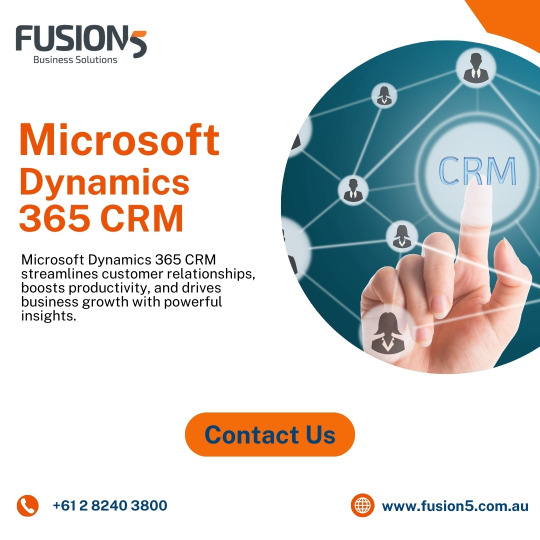
Modern organizations may improve client interactions, increase revenue, and streamline operations with the help of Microsoft Dynamics 365 CRM. Its integrated platform handles customer support, marketing, and sales interactions with ease. Microsoft Dynamics 365 CRM uses automation, analytics, and artificial intelligence (AI) to increase corporate agility, optimize processes, and boost customer interaction. This Flexible Solution encourages team cohesiveness throughout your company and supports data-driven decision-making for sustained success, spend money on Dynamics 365 CRM.
#customer relationship management#erp software#fusion5#corporate performance management#cpm tools#ibm cloud#crm systems#netsuite#enterprise architecture#erp system in new zealand#microsoft dynamics 365 crm
0 notes
Text
If you are ever in a SHTF moment the Bark River knives STS 7.5 would shine.



#Bark River#made in Escanaba MI USA#blade steel CPM 154#fixed blade#black canvas micarta handle scales#blade length 7.5“#1st production run#leather sheath#ferro rod with blue G10 handle#self defense#survival tool
1 note
·
View note
Text
05 Advance Techniques For CPM bid that will Maximize Revenue
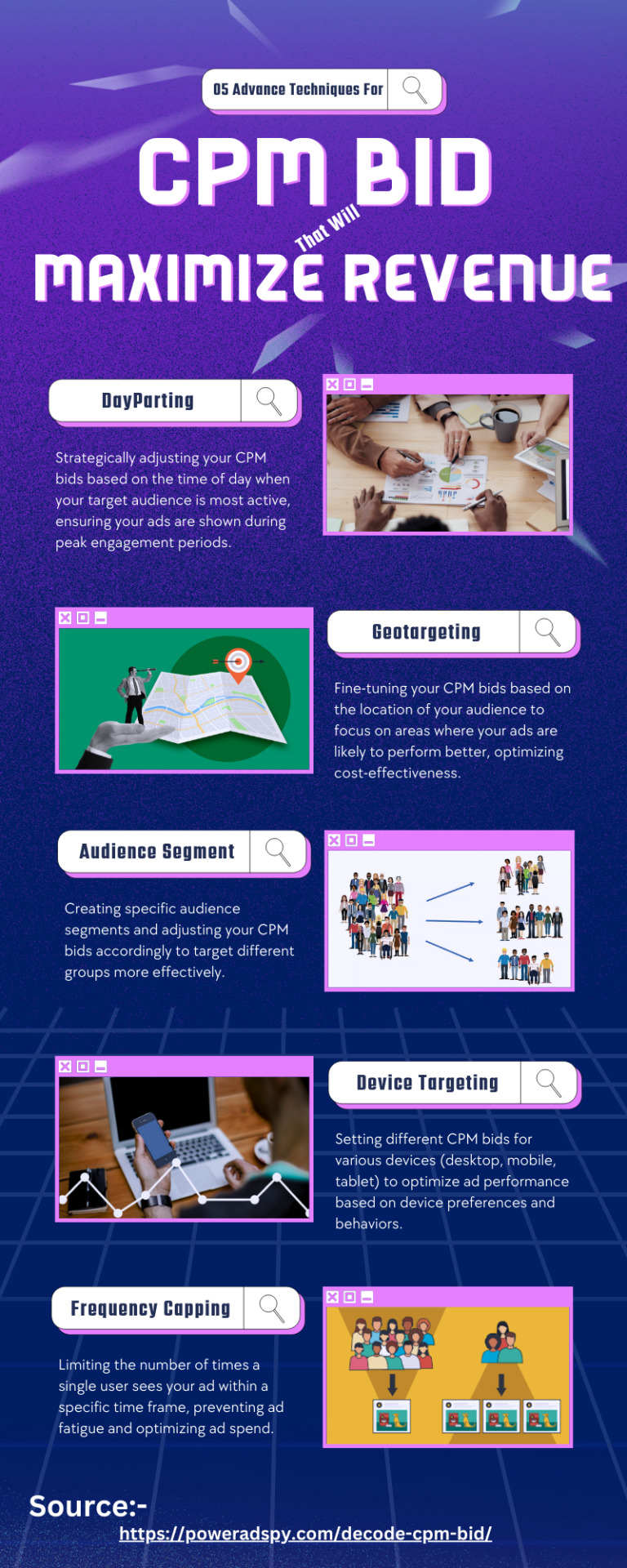
In this Inforgraphic, we will get to know about CPM bid. A way to bid where you pay per one thousand views (impressions) on the Google Display Network….
0 notes
Text
PMP Formulas Complete Certification Guide
PMP Formulas Complete Certification Guide List of Important PMP Formulas for Certification Exam This post enumerates important PMP formulas required for the Project Management Professional (PMP) certification exam. Though the PMP exam does not require elaborate calculations, considering the time constraints recalling some formulas could be a challenge. Hence this resource could be of help to…

View On WordPress
#Critical Path Analysis#Critical Path Method (CPM)#Earned Value Analysis (EVA)#Earned Value Management (EVM)#Program Evaluation And Review Technique (PERT)#Project Management Body of Knowledge (PMBOK)#Project Management Professional (PMP)#Tools and Techniques
0 notes
Text
🌟 Introducing VidFortune AI: The Ultimate Faceless YouTube Video Automation Tool
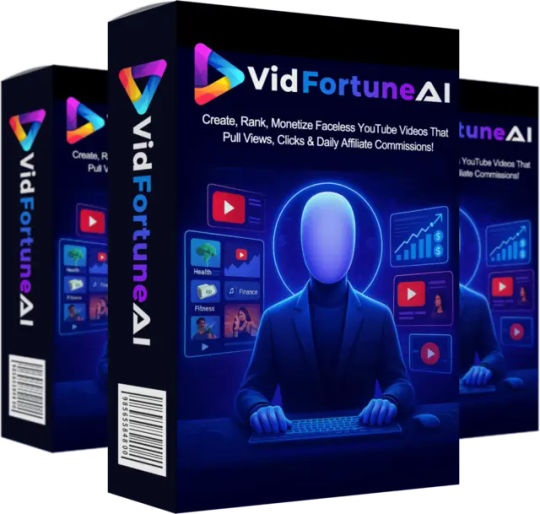
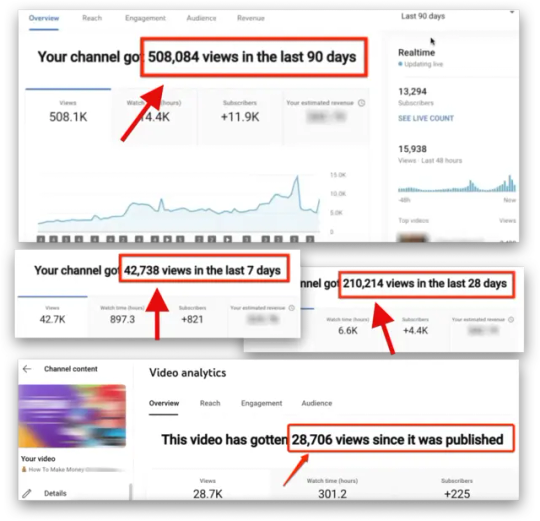
Unlock faceless YouTube success with VidFortune AI — create, rank, and monetize videos in minutes! 💰 High‑CPM niches, AI voiceovers, scripts, thumbnails—all automated. Grab exclusive launch pricing now!
👉Tap to Unlock
Disclaimer: This post contains affiliate links. I may earn a commission at no extra cost to you
2 notes
·
View notes
Text
Vid Fortune AI Review (Yogesh Agarwal) > Creates viral videos
Welcome to my Vid Fortune AI Review 2025. Yogesh Agarwal is the author of Vid Fortune AI. The world’s most powerful Media files Collection is here. In today’s digital world, video content dominates social media, YouTube, and marketing strategies. But creating engaging videos can be time-consuming and expensive. That’s where Vid Fortune AI comes in – a revolutionary AI-powered tool that turns any video into viral, money-making content in minutes! And it’s the SEO optimizer tool that will rank your videos without the guesswork. YouTube videos in 5 minutes to high-CPM niches and see results without any technical skills, memberships, or budget! How we use high-CPM automation to bypass algorithms, crush shadow bans, and unlock traffic, rankings, and commissions, even on brand-new channels!
I’ll cover its features, upgrades, pricing, bonuses, and what it can do for you and share my honest opinion. If you want to learn more about Vid Fortune AI, then Complete my informative Review.
<Read More Review>

#Vid Fortune AI#Vid Fortune AI Review#Vid Fortune AI Honest Review#Vid Fortune AI Reviews#Vid Fortune AI Preview#Vid Fortune AI Demo#Vid Fortune AI Live Demo#Vid Fortune AI Software#Vid Fortune AI OTO#Vid Fortune AI Upgrades#Vid Fortune AI Bonus#Vid Fortune AI App#Vid Fortune AI Download#Vid Fortune AI Upsells#Vid Fortune AI Bonuses#Vid Fortune AI Bundle Vendor Name: Yogesh Agarwal#How Does Vid Fortune AI Work#How to Buy Vid Fortune AI#Make Money with Vid Fortune AI#Vid Fortune AI Scam or Legit#Vid Fortune AI Legit
2 notes
·
View notes
Text
Purpose This project is the second of four projects. It also represents the second part of the external environmental analysis part of a strategic management plan. You will use the tools and apply concepts learned in this and previous business courses to demonstrate an understanding of how organizations develop and manage strategies to establish, safeguard and sustain their competitive position in the 21st century (rapidly evolving/shifting/changing), uncertain hyper-competitive business environment. Monitoring competitors’ performance is a key aspect of performing an external environment analysis. This project provides you with the opportunity to evaluate the competitive position of your assigned company and integrate that information in a partial SWOT (OT), Porter's Five Forces, External Factor Evaluation (EFE) matrix, and Competitive Profile Matrices (CPM). In this project, you are presenting a report document. The expectation is that the report provides details to help the audience grasp the main topics and to understand and complete the External Environmental Analysis. "Analysis" is the operative word. In analyzing the external environment, you are expected to thoroughly research the company. As part of this effort, you will need to take that research and break it into small parts to understand better what is happening in the external environment of the business. In researching an industry, it is important to understand that every company within an industry is different, so gathering information on one company does not mean that the collected information is relevant to other companies. When researching, parsing the material is critical to an accurate analysis. Avoid presenting just any information as that may lead to using irrelevant information. You will then write the report in your own words to share the external analysis. You are expected to present information and support the ideas and reasoning using the course material and your research. You will not lift any information from source documents without properly citing and referencing. For the technical analysis aspect of the project, you must create the technique on your own and may not use any source material that you happen to find. No work from a clearinghouse or similar website may be used or cited as a credible source. Outcomes Met With This Project - Utilize a set of useful analytical skills, tools, and techniques for analyzing a company strategically; - Integrate ideas, concepts, and theories from previously taken functional courses including accounting, finance, market, business, and human resource management; - Analyze and synthesize strengths, weaknesses, opportunities, and threats (SWOT) to generate, prioritize, and implement alternative strategies to revise a current plan or write a new plan and present a strategic plan. Instructions Step 1 Specific Company for All Four Projects The company that your Instructor has assigned to you for Project 1 is the company you will use for this project. The assigned company must be used for this project and in subsequent projects in the course. Students must complete the project using the assigned company. Deviating from the assigned company will result in a zero for the project. After reading the course material, you will complete the steps below. Step 2 Course Materials and Research - You must research information about the specific company and the environment for this project. You are accountable for using the course materials to support the ideas, reasoning, and conclusions made. Using course material extends beyond defining terms—the 'why and how' of a situation. Using one or two in-text citations from the course materials and then relying on Internet source material will not earn many points on the assignment. A variety of source material is expected, and what is presented must be relevant and applicable to the topic being discussed. Avoid merely making statements but close the loop of the discussion by explaining how something happens or why something happens, which focuses on importance and impact. In closing the loop, you will demonstrate the ability to think clearly and rationally, showing an understanding of the logical connections between the ideas presented from the research, the course material, and the question(s) being asked. Note: Your report is based on the research results performed and not on any prepared documentation. What this means is that you will research and draw your own conclusions that are supported by the research and the course material rather than the use of any source material that puts together any of the tools or techniques whether from the Internet, for-pay websites, or any pre-prepared document, video or source material. A zero will be earned for not doing your own analysis. Success: The analysis is based on research and not opinion. You are not making recommendations, and you will not attempt to position the specific company in a better or worse light than other companies within the industry merely because you are completing an analysis on this particular company. The analysis must be based on factual information. Any conclusions drawn have to be based on factual information rather than leaps of faith. To ensure success, as stated above, you are expected to use the course materials and research on the specific company's global industry and the specific company. An opinion does not earn credit, nor does the use of external sources when course materials can be used. It is necessary to provide explanations (the why and how) rather than making statements. Avoid stringing one citation after another, as doing so does not show detailed explanations. Library Resources (Company Required) All the information needed for your assigned company must be obtained from one of the library's suggested online company research databases. To use these resources, go to the main navigation bar in the classroom, select Academic Support, and then select Libary. Next, select Databases by Title (A-Z). Since your primary online company research database is Statista, select S from the alphabet list, and scroll down to select Statista Online. Dun and Bradstreet's Hoovers Database, among others listed using the link directory below, is another excellent source of company research, competitor and industry information. You can find relavant and significant additional information required for company project research by using https://libguides.umgc.edu/business-research. Additional Library Resources Research for Company Financial Ratios: Financial Research. Research for Industry Financial Ratios: CSI Market. Use "OneSearch" to find scholarly articles by clicking Library under Academic Support on the classroom main menu bar and checkmark "Scholarly Journals Only" prior to starting a search. Library Support Personal Assistance Extensive library resources and services are available online, 24 hours a day, seven days a week at https://www.umgc.edu/library/index.cfm to support you in your studies. In addition, the UMGC Library provides research assistance in creating search strategies, selecting relevant databases, and evaluating and citing resources in various formats via its "Ask a Librarian" service at https://www.umgc.edu/library/libask/index.cfm. Step 3 How to Set Up the Report The document has to be written in Word or RTF. No other format is acceptable. No pdf files will be graded. Use 12-point font for a double-spaced report. The final product should be 9 - 10 pages. The final project may not exceed 10 pages, including all tables and matrices, but excluding the title and reference pages. Do no use an Appendix. - Create a title page with the title, your name, date, the course number, the instructor's name. - Create Topic Headings that correspond to exact sections of the project requirements. Step 4 Industry Analysis - Perform a Porter Five Forces analysis on the organization's industry and the specific company in particular. The industry is the global industry. First, use the course materials to identify the five forces and what components make up each force. Then, perform an analysis of each force that clearly discusses the ‘why and how’ and concludes with the effect of the given force on the fortunes of the industry (industry profitability) and/or industry dynamics; that is, whether the effect of the force on the industry is weak/modest/average/moderate or strong/severe and also on the specific company. You may not use a Porter Five Forces analysis that is already completed and available on the Internet. A zero will result if used as the analysis results from your research and your own development. Step 5 Competitive Analysis - Perform a Competitive Analysis using the specific company’s closest three competitors plus the selected company. Explain why these companies are competitors. Analyze the competition's products and services, explaining features, value, targets, etc. What are the competition's strengths and weaknesses, and what is the market outlook for the competition? - Identify and discuss at least eight (8) key success factors (critical success factors). Each industry has different key success factors, so make sure the success factors fit the industry. Review the Competitive Profile Matrix Example under Week 3 Content for clarification. - Develop a Competitor Profile Matrix (CPM). Explain how you developed the matrix. Make sure to support your reasoning. Step 6 Partial SWOT Analysis A SWOT analysis is a tool used to assess the strengths and weaknesses (internal environment) and the opportunities and threats (external environment) of an organization. You will complete a partial SWOT analysis only completing an analysis on the OT (Opportunities and Threats). The information presented is not based on your beliefs but fact-based, data-driven information. The items used in the OT are factors that are affecting or might affect the specific company or those companies within the identified industry. You will: - Develop an OT table using your research to identify at least five (5) opportunities and five (5) threats that influence the industry and the specific company. Make sure to cite the elements within the table. - Perform an OT analysis (separate from the SWOT table). - You may not use a SWOT analysis that is already completed and available on the Internet. The OT is for the specific company and no other company. A zero will result if used as the analysis results from your research and your own development. NOTE: A matrix is a table. It is not an analysis. Step 7 External Factor Evaluation (EFE) Analysis The External Factor Evaluation (EFE) matrix will allow you to use the industry analysis and the competitive analysis to assess whether the specific company can effectively take advantage of existing opportunities while minimizing the identified external threats that will help you formulate new strategies and policies. You will use the opportunities and threats from the OT analysis. - Using the information gathered for the OT analysis, develop an EFE matrix using five (5) opportunities and five (5) threats. Discuss how you developed the EFE matrix and the outcome. Make sure to support your reasoning. Step 8 Conclusion Create a conclusion. The Conclusion is intended to emphasize the purpose/significance of the analysis, emphasize the significance/consequence of findings, and indicate the wider applications derived from the main points of the project’s requirements. You will conclude with the findings of the external environment analysis. EFE ANALYSIS TOOL https://thinkinsights.net/strategy/efe-analysis/ EFE MATRIX TOOL http://www.maxi-pedia.com/EFE+matrix+external Read the full article
3 notes
·
View notes
Text
Boost Your Advertising Success with an ExoClick Ads Account
Are you looking to scale your online advertising campaigns and achieve maximum ROI? If so, an ExoClick Ads Account is the perfect solution for you. ExoClick is one of the most advanced and high-performing ad networks, offering powerful targeting options, high-quality traffic, and multiple ad formats to enhance your digital marketing strategy.
Why Choose ExoClick for Your Advertising Needs?
ExoClick stands out as a leading ad network, providing advertisers with exceptional opportunities to reach their target audience efficiently. Here’s why you should consider ExoClick for your marketing campaigns:
1. Diverse Ad Formats
ExoClick supports multiple ad types, including banner ads, popunders, native ads, and video ads, giving advertisers flexibility in their campaigns.
2. Advanced Targeting Features
With ExoClick, you can target your audience based on geo-location, device type, browser, language, and interests, ensuring maximum relevance for your ads.
3. High-Quality Traffic & Global Reach
ExoClick provides access to millions of users worldwide, delivering premium traffic that converts effectively.
4. Real-Time Optimization & Analytics
The platform offers powerful analytics tools, helping advertisers monitor campaign performance and make data-driven decisions for better results.
5. Affordable & Cost-Effective Solutions
ExoClick’s flexible pricing models (CPC, CPM, and CPA) ensure that businesses of all sizes can benefit from their advertising solutions.
Get an ExoClick Ads Account Hassle-Free
If you're looking to buy a verified and ready-to-use ExoClick Ads Account, we’ve got you covered! At VCCAccount.com, we provide high-quality ExoClick accounts that are fully verified and ready for advertising.
Why Buy from Us?
✅ Fully Verified ExoClick Accounts ✅ Instant Delivery & Secure Transactions ✅ 24/7 Customer Support ✅ Affordable Pricing ✅ Guaranteed Account Approval
Don’t miss out on the opportunity to grow your advertising campaigns with ease. Buy your ExoClick Ads Account now and take your online marketing to the next level!
Conclusion
ExoClick is a game-changer for advertisers looking for scalable and high-ROI campaigns. Whether you're an experienced marketer or just starting, having an ExoClick Ads Account can significantly enhance your digital advertising strategy. Visit VCCAccount.com today and start your journey toward profitable online advertising!
2 notes
·
View notes
Note
Hey, I really love your work, and it's inspired me to try making a custom player model of my own. If you don't mind me asking, how do you rig the player models to work in game?
oh hell yeah!!! the rigging for in-game stuff is done using a mod called Customizable Player Models, it's available for basically every mod loader and version of the game. it has its own built-in modeling tools but i'd recommend modeling and texturing in blockbench and just using CPM for the ingame stuff. it's a lil daunting to use, but CPM has a discord with a lot of lovely people who can totally help walk you through the process (including me! i'm really active there!) makin your own model is cool as hell, but it's def a lil difficult to get started without the help of someone who's done it before. good luck with your modeling journey!!!
10 notes
·
View notes
Text
How Meta Ads Help in Marketing Your Business
As a expert in Imagency media i will give complete guidlines on this...
In today's digital landscape, businesses must leverage effective advertising strategies to reach their target audiences. Meta Ads, formerly known as Facebook Ads, have become a powerful tool for marketers, offering various features and benefits that can enhance business visibility and drive results. In this article, we’ll explore how Meta Ads can significantly improve your marketing efforts.
1. Extensive Audience Reach
Meta platforms, including Facebook and Instagram, boast billions of active users worldwide. This vast user base provides businesses with an unparalleled opportunity to reach potential customers across different demographics and geographic locations. By utilizing Meta Ads, businesses can connect with a diverse audience and increase their brand visibility.
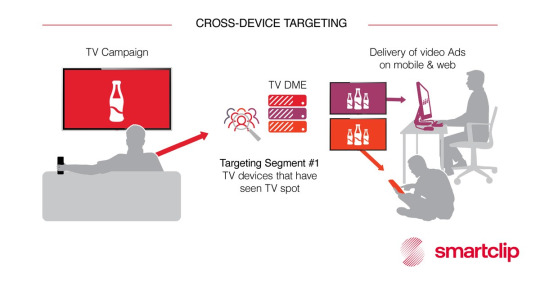
2. Advanced Targeting Capabilities
One of the standout features of Meta Ads is their sophisticated targeting options. Advertisers can reach specific audiences based on various criteria, including:
Demographics: Age, gender, location, and language.
Interests: Hobbies, preferences, and behaviors.
Custom Audiences: Targeting users who have previously interacted with your business, such as website visitors or past customers.
Lookalike Audiences: Finding new customers similar to your existing audience.
This level of precision ensures that your ads are seen by the most relevant users, increasing the likelihood of engagement and conversions.
3. Diverse Ad Formats
Meta Ads support a wide range of ad formats, allowing businesses to choose the best options for their campaigns. Some popular formats include:
Image Ads: Simple yet effective, ideal for showcasing products.
Video Ads: Engaging content that captures attention and tells a story.
Carousel Ads: Multiple images or videos that users can swipe through, perfect for showcasing a collection.
Stories Ads: Full-screen vertical ads that appear between user stories, providing a seamless viewing experience.
This variety enables businesses to create compelling ads that re
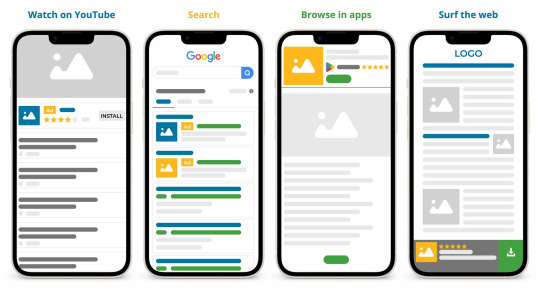
sonate with their target audience.
4. Cost-Effective Marketing
Meta Ads operate on a bidding system, allowing businesses to set their budgets and control their advertising costs. This flexibility makes it possible for companies of all sizes to run effective campaigns. Advertisers can choose between cost-per-click (CPC) and cost-per-impression (CPM) models, ensuring that they can maximize their return on investment.
5. Enhanced Brand Awareness
Meta Ads are an excellent tool for building brand awareness. By consistently displaying ads to your target audience, you can increase visibility and recognition of your brand. Engaging ad formats, such as videos and interactive content, can further enhance user engagement, fostering a stronger connection between the audience and your brand.
6. Retargeting Capabilities
Retargeting is a powerful strategy that allows businesses to reconnect with users who have previously interacted with their brand. With Meta Ads, you can create custom audiences to retarget users who visited your website, added products to their cart, or engaged with your content. This approach helps nurture leads and increases the chances of conversion by reminding potential customers of their interest in your products or services.
7. Comprehensive Analytics and Insights
Meta Ads provide robust analytics tools that allow businesses to track the performance of their campaigns. Advertisers can access detailed metrics, such as reach, engagement, clicks, and conversion rates. This data is invaluable for understanding the effectiveness of your ads and making data-driven decisions to optimize future campaigns.
8. Seamless Integration with E-commerce
For e-commerce businesses, Meta Ads offer features like product catalogs and shopping ads, making it easy to showcase products directly on the platform. These features allow customers to browse and shop without leaving the app, creating a seamless shopping experience and driving sales.
Conclusion
Incorporating Meta Ads into your marketing strategy can significantly enhance your business’s online presence and drive meaningful results. With extensive reach, advanced targeting options, diverse ad formats, and powerful analytics, Meta Ads offer a comprehensive solution for businesses looking to grow and engage with their audience. By leveraging these tools effectively, you can maximize your marketing efforts and achieve your business goals.
Contact today for meta ads services
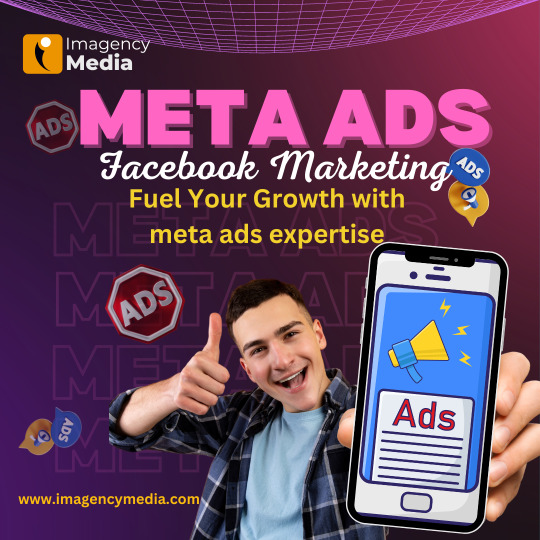
3 notes
·
View notes
Text
DIGITAL MARKETING
Digital Marketing Course Content
Fundamentals of Digital marketing & Its Significance, Traditional marketing Vs Digital Marketing, Evolution of Digital Marketing, Digital Marketing Landscape, Key Drivers, Digital Consumer & Communities, Gen Y & Netizen’s expectation & influence wrt Digital Marketing. The Digital users in India, Digital marketing Strategy- Consumer Decision journey,
POEM Framework, Segmenting & Customizing messages, Digital advertising Market in India, Skills in Digital Marketing, Digital marketing Plan. Terminology used in Digital Marketing, PPC and online marketing through social media, Social Media Marketing, SEO techniques, Keyword advertising, Google web-master and analytics overview, Affiliate Marketing, Email Marketing, Mobile marketing
Display adverting, Buying Models, different type of ad tools, Display advertising terminology, types of display ads, different ad formats, Ad placement techniques, Important ad terminology, Programmatic Digital Advertising.
Social Media Marketing
Fundamentals of Social Media Marketing& its significance, Necessity of Social media Marketing, Building a Successful strategy: Goal Setting, Implementation. Facebook Marketing: Facebook for Business, Facebook Insight, Different types of Ad formats, Setting up Facebook Advertising Account, Facebook audience & types, Designing Facebook Advertising campaigns, Facebook Avatar, Apps, Live, Hashtags LinkedIn Marketing: Importance of LinkedIn presence, LinkedIn Strategy, Content Strategy, LinkedIn analysis, Targeting, Ad Campaign Twitter Marketing:- Basics, Building a content strategy, Twitter usage, Twitter Ads, Twitter ad campaigns, Twitter Analytics, Twitter Tools and tips for mangers. Instagram & Snapchat basics.
Search Engine Optimization
Introduction to SEO, How Search engine works, SEO Phases, History Of SEO, How SEO Works, What is Googlebot (Google Crawler), Types Of SEO technique, Keywords, Keyword Planner tools On page Optimization, Technical Elements, HTML tags, Schema.org, RSS Feeds, Microsites, Yoast SEO Plug-in Off page Optimization- About Off page optimization, Authority & hubs, Backlink, Blog Posts, Press Release, Forums, Unnatural links. Social media Reach- Video Creation & Submission, Maintenance- SEO tactics, Google search Engine, Other Suggested tools
Advertising Tools & Its Optimization
Advertising & its importance, Digital Advertising, Different Digital Advertisement, Performance of Digital Advertising:- Process & players, Display Advertising Media, Digital metrics Buying Models- CPC, CPM, CPL, CPA, fixed Cost/Sponsorship, Targeting:- Contextual targeting, remarking, Demographics , Geographic & Language Targeting. Display adverting, different type of ad tools, Display advertising terminology, types of display ads, different ad formats, Ad placement techniques, Important ad terminology, ROI measurement techniques, AdWords & Adsense. YouTube Advertising:- YouTube Channels, YouTube Ads, Type of Videos, Buying Models, Targeting & optimization, Designing & monitoring Video Campaigns, Display campaigns
Website Hosting Using Word Press
Website Planning & Development- Website, Types of Websites, Phases of website development, Keywords: Selection process Domain & Web Hosting:- Domain, Types of Domain, Where to Buy Domain, Webhosting, How to buy Webhosting Building Website using Word press-What is Word press, CMS, Post and Page Word press Plug-ins- Different Plug-ins, social media Plug-ins, page builder plug-ins: the elementor, how to insert a section, how to insert logo, Google Micro sites
2 notes
·
View notes
Text
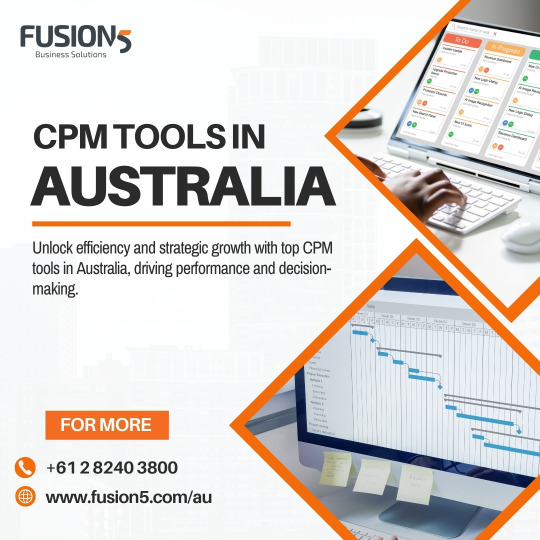
Use Australia's cutting-edge CPM tools to optimize your return on investment. Simplify financial planning, budgeting, and forecasting to boost precision and efficiency. To aid in decision-making, use real-time insights and analytics created especially for Australian businesses. Utilize state-of-the-art corporate performance management solutions that are intended to produce quantifiable outcomes to boost performance and unlock growth potential. Visit us now to know more about CPM Tools in Australia.
#customer relationship management#erp software#fusion5#cpm tools#ibm cloud#corporate performance management#crm systems#netsuite#enterprise architecture#CPM Tools in Australia
0 notes
Text
Google Ads to Promote Business
Google Ads is an online advertising platform developed by Google, where advertisers can bid on specific keywords or phrases to display their ads to a targeted audience.
Why use Google Ads? Google Ads is the most popular online advertising platform, with over 3.5 billion searches per day. It offers advanced targeting options, real-time reporting, and a variety of ad formats to suit your business needs.
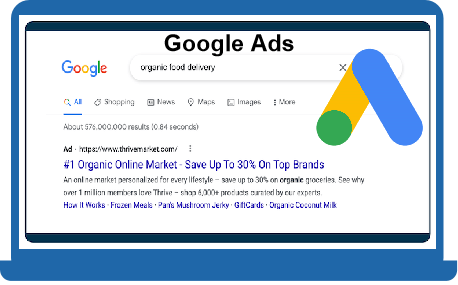
Benefits of using Google Ads: Using Google Ads (formerly known as Google AdWords) offers several benefits for businesses looking to promote their products or services online. Here are some of the key advantages:
Targeted Advertising: Google Ads provides powerful targeting options that allow advertisers to reach specific audiences based on keywords, location, language, device type, demographics, and even user behavior. This level of precision enables businesses to tailor their ads to the right people at the right time, increasing the likelihood of attracting potential customers who are genuinely interested in their offerings. Targeted advertising helps improve conversion rates and reduces wasted ad spend on irrelevant audiences.
Measurable Results: One of the most significant advantages of Google Ads is the ability to track and measure the performance of your ads in real-time. Advertisers can access a wealth of data, including clicks, impressions, click-through rates (CTRs), conversions, and more. By analyzing these metrics, businesses can gain valuable insights into the effectiveness of their campaigns. This data-driven approach allows for continuous optimization, enabling advertisers to make data-backed decisions and improve the overall ROI of their advertising efforts.
Cost-effective Marketing: Google Ads operates on a pay-per-click (PPC) or pay-per-impression (CPM) model, which means advertisers only pay when someone clicks on their ad or when their ad is shown a certain number of times (in the case of CPM). This pay-as-you-go approach makes Google Ads a cost-effective marketing option, as advertisers have control over their budget and can set daily or monthly spending caps. Additionally, the targeting options help avoid spending on irrelevant audiences, making each ad dollar more efficient.
Increased Brand Awareness: Google is one of the most widely used search engines, with billions of searches conducted daily. By running ads on Google, businesses can expose their brand to a massive audience and increase brand visibility. Even if users don’t click on the ads immediately, they are still exposed to the brand name and message, which can lead to increased brand recall and consideration when the users are ready to make a purchase. Remarketing features also allow businesses to reconnect with users who have previously interacted with their website or app, reinforcing brand awareness and encouraging return visits.
Overall, Google Ads provides a versatile and results-driven advertising platform that empowers businesses of all sizes to reach their target audience effectively, track campaign performance accurately, manage ad spend efficiently, and enhance their brand’s presence in the digital landscape. When used strategically, Google Ads can be a powerful tool for driving traffic, generating leads, and boosting sales.
Types of Google Ads: Google Ads offers various types of ad formats to advertisers, allowing them to target different audiences and achieve specific marketing goals. Here are the main types of Google Ads:
Search Ads: Search ads appear at the top or bottom of the Google search results page when users enter relevant keywords or phrases. These ads are text-based and typically consist of a headline, description lines, and a display URL. Advertisers bid on keywords, and when a user’s search query matches those keywords, their ad may appear. Search ads are great for reaching users actively looking for products or services, making them highly effective for generating leads and conversions.
For example, below are the search campaign ads for the keyword “laptops”. They appear on the search result page with the black “Ad” symbol next to the URL.
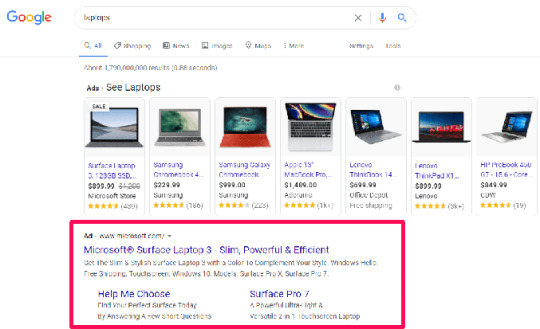
2. Display Ads: Display ads are visual advertisements that appear on websites within the Google Display Network (GDN). The GDN includes millions of websites and reaches a vast audience across various interests and demographics. Display ads can be in the form of banners, images, interactive ads, or even video. They are ideal for building brand awareness, reaching a broad audience, and showcasing products or services to potential customers.
The Display Network leverages Google’s vast website partners to showcase your ad on different websites all over the Internet. These ads appear on third-party websites like so:
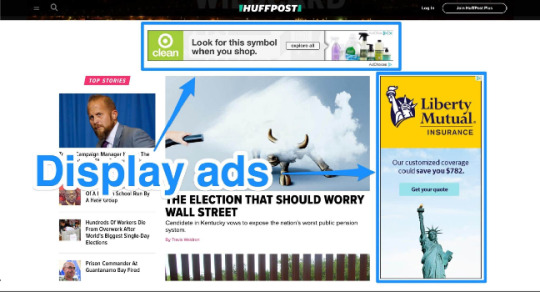
3. Shopping Ads: Shopping ads (formerly known as Product Listing Ads or PLAs) are product-centric advertisements that appear on Google search results and Google Shopping. These ads display product images, prices, and other essential details directly in the search results. Shopping ads are particularly beneficial for e-commerce businesses as they allow users to see product information before clicking on the ad, leading to more qualified leads and higher conversion rates.
A shopping campaign allows you to promote your products in a much more visual way. These ads can appear as images on the search results page:
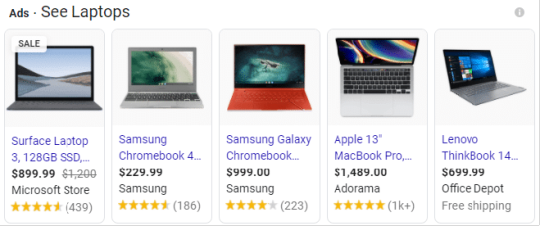
4. Video Ads: Video ads are advertisements that appear on YouTube and other Google partner sites. These ads can be in various formats, such as skippable in-stream ads, non-skippable in-stream ads, video discovery ads, and bumper ads.
Video ads are an effective way to engage users visually and deliver impactful brand messages. They are suitable for storytelling, product demonstrations, and increasing brand visibility through video content.
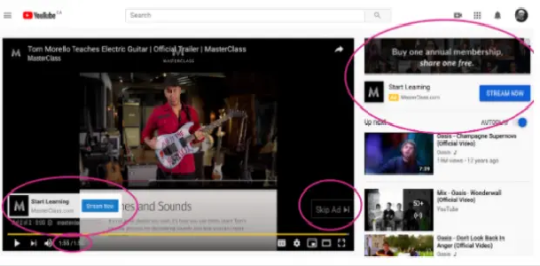
5. App Ads: App ads, also known as Universal App Campaigns (UAC), are designed to promote mobile apps across Google’s ecosystem, including Google Search, Google Play Store, YouTube, and the Display Network.
Advertisers can specify their app’s destination and ad text, and Google’s algorithm optimizes the campaign to reach users who are most likely to install the app. App ads are excellent for driving app downloads and increasing the user base for mobile applications.
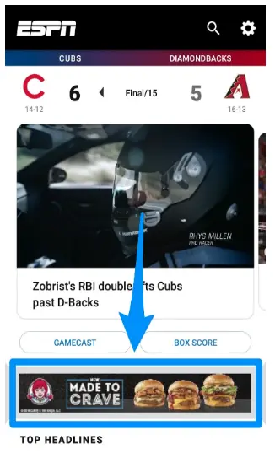
Each type of Google ad has its unique advantages, and advertisers can choose the most appropriate ad formats based on their marketing objectives and target audience. The combination of different ad types allows businesses to create comprehensive and effective advertising strategies across various platforms and reach potential customers at different stages of the customer journey.
Conclusion:
In conclusion, Google Ads is a powerful tool that can help businesses of all sizes reach their target audience and achieve their marketing goals.
By utilizing its targeting capabilities, cost-effective pricing model, and detailed analytics, businesses can create effective campaigns and see measurable results.
Check out - The Ultimate Guide to Google Ads to get deep understanding of the topic.
Hope you enjoyed reading. 😄 Thanks!
About Me:
Hi! I’m Amisha Jaiswal. I’m a creative and passionate Digital Marketer. I strive to bring innovative ideas to life while making a meaningful impact.
Let’s connect — www.linkedin.com/in/amisha-jaiswal
#marketing#marketing trends#marketing digital#marketing strategy#marketing online#digital marketing#google ads#google adwords#google advertising#business#google algorithm#digital marketing tips#digital marketing trends
8 notes
·
View notes
Note
hey i was wondering how you made your custom minecraft playermodels? (with the extra parts and things) i want to do that too!!!
most of my models are made primarily in blockbench, and then i use a plugin to export them for use with the customizable player models mod! cpm also has an ingame editor but its pretty finicky and i honestly tend to avoid using it for anything other than animations and Maybe stuff like resizing armor for ingame use. both cpm's editor and blockbench also have texture painting tools but i almost always make those in clip studio paint save for really minor tweaks.
5 notes
·
View notes
Text
for my fellow desktopers
what's your typing speed?
3 notes
·
View notes
Text
I remember trying that CPM mod in the past. The lack of a gizmo tool was a pain




Delivering mail to the furthest corners of the server ✉✈


5K notes
·
View notes